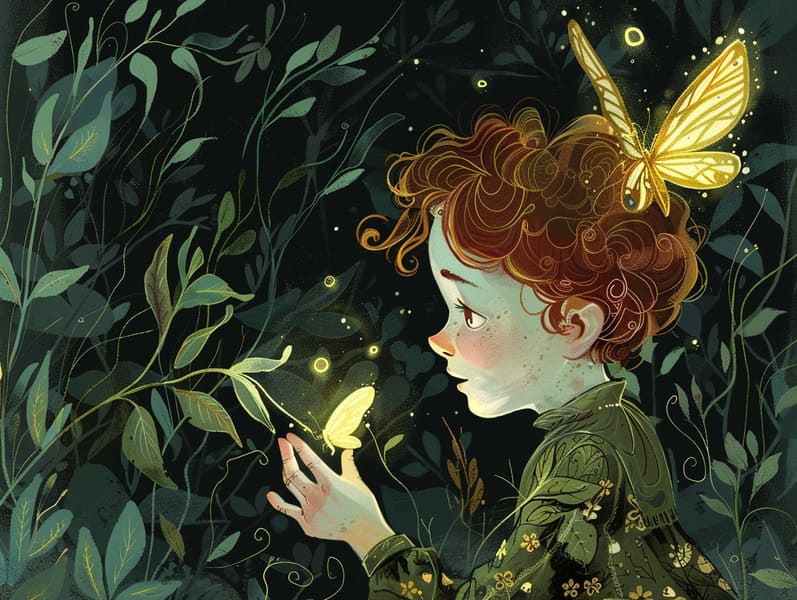
Famous fairy tales have old origins. These stories have been passed down from one generation to the next millennia before they were ever published. They were born from a variety of traditions, including Asian traditions. They were initially passed along among mature audiences, often carrying themes and messages mirroring the societal norms and beliefs of the time.
The Grimm brothers, Jacob and Wilhelm (the Grimm brothers), were among the first to collect and release many of these beloved stories. Their volume, "Grimm's Fairy Stories," included tales like "Cinder Maid," "The Bread Crumb Trail," and "Little Snow White," which have since become pillars in the world of famous fairy tales. Similarly, Andersen's imaginative stories, such as "The Little Mermaid," and "The Little Duckling," have captured hearts worldwide, cementing their place in the pantheon of treasured fairy tales.
Though they are centuries old, these stories remain as significant as ever, especially as bedtime stories for kids. These enchanting tales are now available in different formats, including vibrantly illustrated books, charming animations, and digital storybooks.
Their persistent charm can be attributed to several whimsical characteristics:
Important Morals: Traditional fairy tales often present important moral lessons. Fairy tales like "The Story of the Boy Who Cried Wolf" teach the benefit of honesty, while "The Tale of the Tortoise and the Hare" underline the virtues of persistence and humbleness. These narratives offer young ones clear distinctions between ethical and unethical, guiding their moral compass in a subtle yet significant way.
Compassion and Insight: Timeless fairy tales frequently feature protagonists facing struggles and tests, prompting kids to empathize with their struggles and applaud their triumphs. For instance, "Beauty and Her Beast" reveals the virtue of looking past the exterior to acknowledge the inner spirit of a character, strengthening insight and knowledge.
Cultural Perception: Many fairy tales are infused with the cultural contexts from which they grew. Delving into these fairy tales can provide fascinating glimpses into different social structures, advancing a sense of world awareness and comprehension.
Inventiveness and Imagination: The mythical elements in traditional fairy tales—enchanted forests—generate children’s creativity. These stories take readers to supernatural realms, fostering imaginative here dreams and a sense of amazement that continues a lifetime.
Old fairy tales are not only charming but also pedagogical. They serve as fascinating tools in strengthening various cognitive and emotional skills in children. When timeless fairy tales are spoken, they boost verbal skills by offering new linguistic elements and complex sentence structures. This practice also promotes listening abilities and attention, as kids concentrate deeply, expectant to see what happens next.
Furthermore, examining the themes and characters of timeless fairy tales can cultivate intellectual skills and logical thinking. Kids learn to find patterns, anticipate outcomes, and catch on to cause and effect. These explorations also contribute to the young articulate their thoughts and feelings, adding to their emotional intelligence.
In today’s modern era, the prevalence of digital storybooks has made these tales more available than ever. Digital sites and programs supply broad selections of old fairy tales that can be explored or listened on anytime, anywhere. Fairy tales voiced are particularly popular, giving an delightful method for young readers to experience these whimsical stories. Narrated books and spoken videos lead characters and settings to life, often supported by entrancing music and musical scores that raise the tale journey.
The everlasting appeal of old fairy tales lies in their ability to evolve to contemporary times while preserving their central messages. Contemporary modernizations of these narratives often present more multicultural characters and modern settings, making them meaningful to today’s audience. However, the basic principles of bravery, benevolence, and rightness remain unchanged, continuing to impact readers of all ages.
Old fairy tales also offer a sense of familiarity and understanding. They disclose a ordered narrative with a plain beginning, middle, and end, often coming to a close with the resolution of conflicts and the triumph of virtue over vice. This assuredness can be comforting for young ones, allowing a sense of dependability in an variable world.
Classic fairy tales continue to captivate and edify new generations, maintaining their fascination and applicability in modern society. As children's bedtime stories, they introduce a perfect blend of charm and understanding, developing moral values, empathy, and creativity. The prevalence of online fairy tales and the well-liked nature of fairy tales spoken ratify that these traditional stories remain accessible to new generations.
By protecting and telling these tales, we continue to celebrate the rich tapestry of tales and cultural heritage. Whether you are perusing a colorful picture book, delving into a electronic collection, or listening on an narrated book, the loveliness of classic fairy tales is always within reach. These narratives remind us of the unwavering spell of tales and its ability to bond us across time and space.
If you are perusing a richly illustrated book, enjoying a digital collection, or listening through an narrated book, the loveliness of classic fairy tales is always within reach.
These narratives teach us of the ageless nature of storytelling and its ability to bond us across time and space, weaving a spell that captivates and teaches alike.